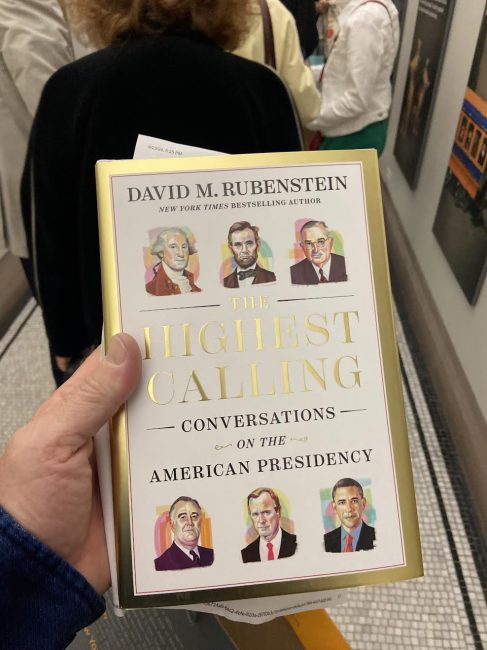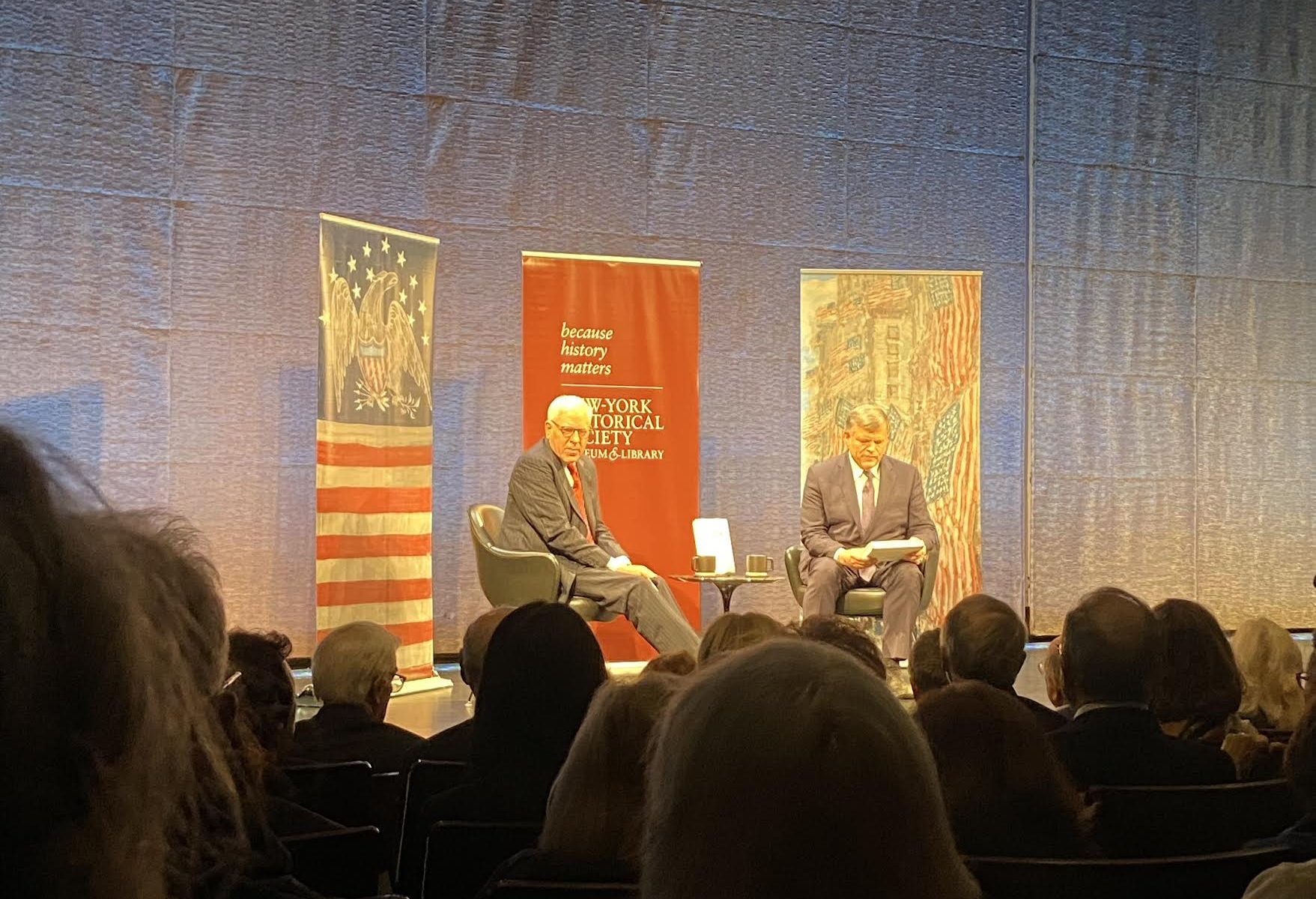David Rubenstein‘s talk with historian Douglas Brinkley at the New York Historical Society on US Presidents was fascinating. It was part of their Highest Calling: Conversations on the American Presidency series. David’s talk discussed how the American presidency has changed over time, including its responsibilities, expectations, and symbolism.

I’m not a history expert or particularly interested in US history, but I find David Rubenstein’s humor and insight riveting. He makes history come alive by sharing interesting tidbits and insights into the lives of the Presidents.
On this occasion, David Rubenstein shared personal anecdotes about Thomas Jefferson, Franklin Delano Roosevelt (FDR), Harry S. Truman, and Abraham Lincoln.
Thomas Jefferson hated to speak in public because of his high-pitched, squeaky voice. The only public speech he made was at his first inauguration.
David Rubenstein said Franklin Delano Roosevelt’s polio diagnosis might have helped the President develop the grit and determination to succeed in the Oval Office and win World War II. David shared how FDR wasn’t able to receive treatment to cure his polio because he went undiagnosed for thirty days. FDR was also obsessed with collecting postage stamps.
Harry Truman was the only 20th-century U.S. President who didn’t go to college.
Mary Todd Lincoln‘s unlikeable disposition could be responsible for her husband’s assassination. The First Lady’s rudeness caused General Ulysses Grant and his wife to decline an invitation to the Ford Theater. If the couple had agreed to accompany the Lincolns on that fateful night, there would have been the proper security to prevent John Wilks Booth from shooting the president.
Douglas Brinkley, a New York Historical Society presidential historian, will also moderate the discussion. Brinkley frequently contributes to CNN, MSNBC, and CBS on presidential history. David Rubenstein is the co-founder and co-chairman of the Carlyle Group and the host of History with David Rubenstein on PBS. He has written several books, including The Highest Calling: Conversations on the American Presidency and How to Invest: Masters on the Craft. He served under the Carter administration and purchased several copies of the Declaration of Independence for the public to view. He also owns the Baltimore Orioles.
Speaking of baseball, several Major League Baseball (MLB) players are living with type 1 diabetes. Jordan Hicks, a 25-year-old-starting pitcher for the San Francisco Giants, adjusts his routine to monitor his blood sugar, insulin intake and meal plan. “You Can be diabetic, and you can be a phenom,” Jordan Hicks said. “You can be phenomenal. You can do all those things. Just because you’re diabetic doesn’t mean you should let that take anything away from you.”
Mason Miller, pitcher for the Oakland A’s, who was diagnosed with type 1 diabetes, wants to be a role model for children with diabetes. He has said that diabetes is part of who he is, but it’s not who he is entirely. He doesn’t need to be embarrassed about it or scared to share it.
Jason Johnson was the first MLB player to wear an insulin pump while playing on the field. To accomplish this feat, Jason Johnson needed to experiment with infusion sites and the best place to attach the pump to his Tigers uniform. He knew he had to wear the pump in a spot safe from line drives. He also knew he had to insert the infusion needle under the skin in a spot where it wouldn’t get yanked out by the extreme torque that a major league pitcher generates during his delivery. So, Jason Johnson decided to clip the pump to his belt near the small of his back, a few inches below his uniform number.


